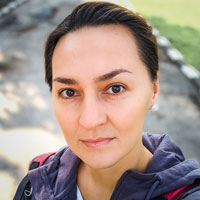Sorting through a folder of samples, I realized that I had unintentionally created my own spring palette for facades. Soft gray plaster combined with dark wood no longer seems as interesting to me. Right now, I’m in love with the combination of light stone with metal inserts.

Yesterday, I proposed an unusual solution to my clients: white brick and Corten steel panels. At first, they were skeptical, but when I showed them a visualization and photos of similar projects, they got excited. The contrast of textures and colors creates a dynamic feel that many modern houses lack.


I've also noticed that the trend for natural textures is making a comeback. Right now, I’m trying to incorporate gabions into a project as decorative elements—these are mesh structures filled with stones. They create a bold and striking effect. I’ll share my client’s reaction with you later.







